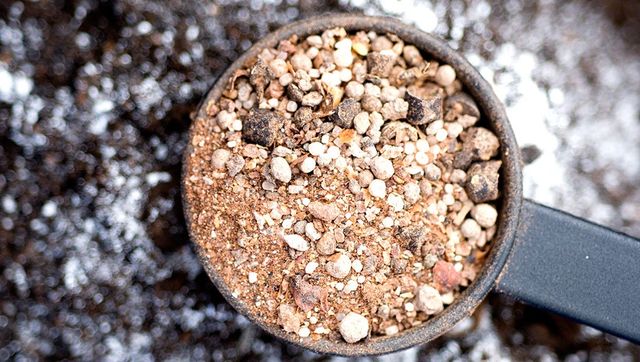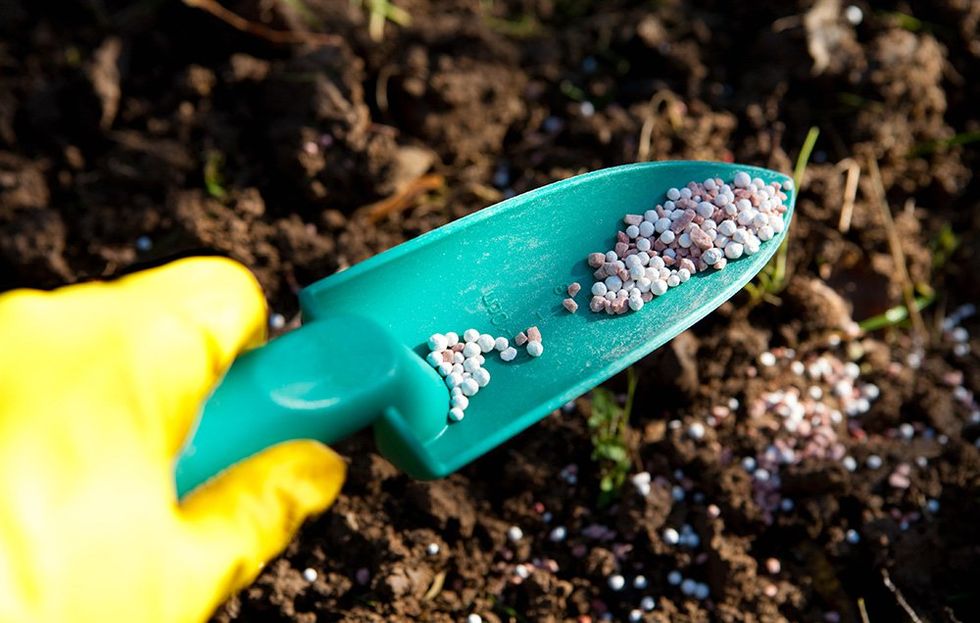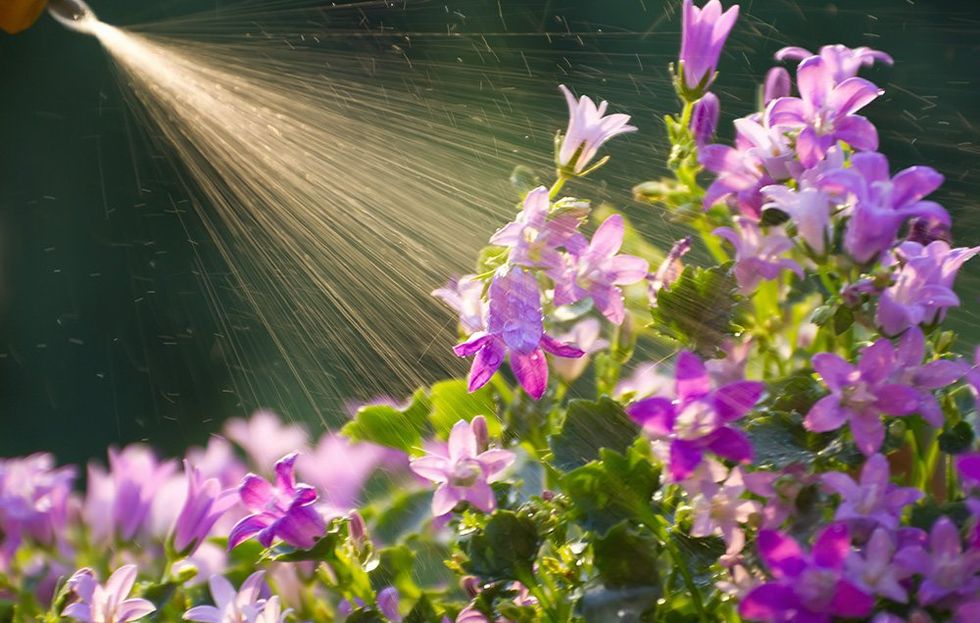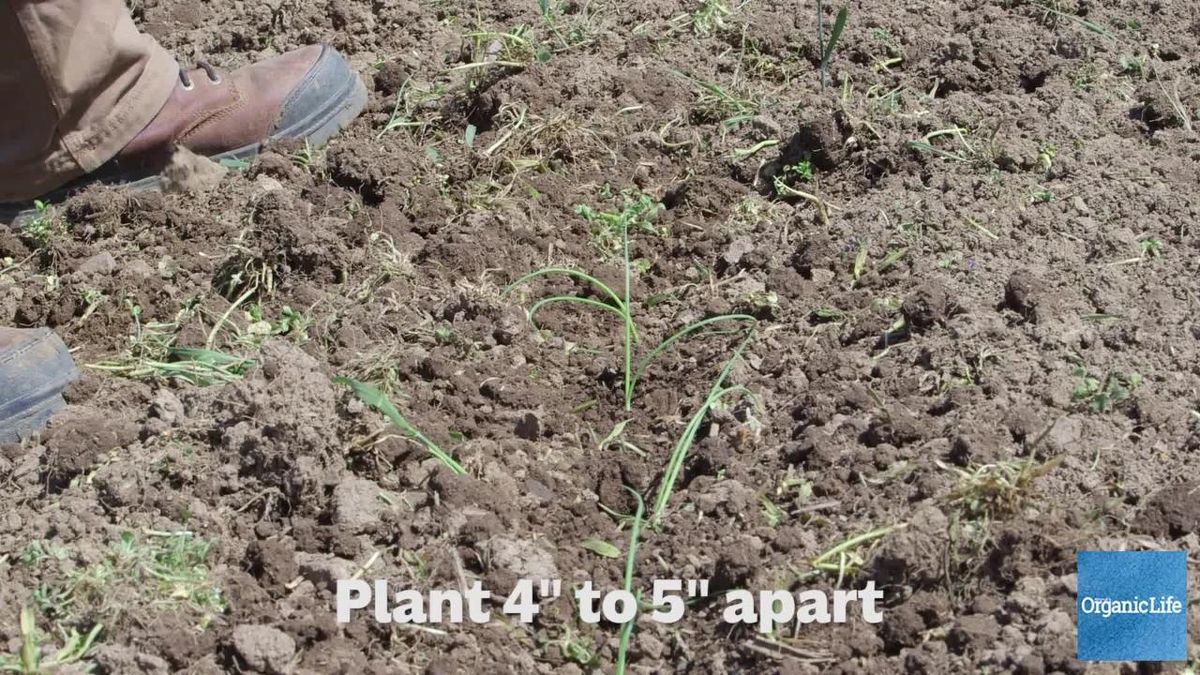This story originally appeared on Rodale’s Organic Life in March 2017.
For organic gardeners, creating a living soil rich in humus and nutrients is the key to growing great fruits and vegetables, abundant flowers, and long-lived ornamental trees and shrubs. The overall fertility and viability of the soil, rather than the application of fertilizers as quick fixes, is at the very heart of organic gardening.
But like all gardeners, organic gardeners have to start somewhere. Your soil may be deficient in certain nutrients. It may not have excellent soil structure. Its pH may be too high, or too low. Unless you’ve lucked into the perfect soil, you’re going to have to work to make it ideal for gardening. Here's how to get started. (If you're not sure what kind of soil you have, start with these ten easy soil tests.)
Chemical Vs. Organic Fertilizer
Many organic materials serve as both fertilizers and soil conditioners—they feed both soils and plants. This is one of the most important differences between a chemical approach and an organic approach toward soil care and fertilizing. Soluble chemical fertilizers contain mineral salts that plant roots can absorb quickly. However, these salts do not provide a food source for soil microorganisms and earthworms, and they will even repel earthworms because they acidify the soil. Over time, soils treated only with synthetic chemical fertilizers lose organic matter and the all-important living organisms that help to build a quality soil. As soil structure declines and water-holding capacity diminishes, more and more of the chemical fertilizer applied will leach through the soil. In turn, it will take ever-increasing amounts of chemicals to stimulate plant growth. When you use organic fertilizers, you avoid throwing your soil into this kind of crisis condition. (Already ruined your earth? Here are five ways you can improve your soil.)
What's more, the manufacturing process of most chemical fertilizers depends on nonrenewable resources, such as coal and natural gas. Others are made by treating rock minerals with acids to make them more soluble. Fortunately, there are more and more truly organic fertilizers coming on the market. These products are made from natural plant and animal materials or from mined rock minerals. However, the national standards that define and distinguish organic fertilizers from chemical fertilizers are complicated, so it’s hard to be sure that a commercial fertilizer product labeled “organic” truly contains only safe, natural ingredients. Look for products labeled “natural organic,” “slow release,” and “low analysis.” Be wary of products labeled organic that have an NPK (nitrogen-phosphorus-potassium) ratio that adds up to more than 15. Ask a reputable garden center owner to recommend fertilizer brands that meet organic standards, or go the DIY route and make your own organic fertilizer.
How To Use Organic Fertilizers
If you’re a gardener who’s making the switch from chemical to organic fertilizers, you may be afraid that using organic materials will be more complicated and less convenient than using premixed chemical fertilizers. Not so! Organic fertilizer blends can be just as convenient and effective as blended synthetic fertilizers. You don’t need to custom feed your plants organically unless it’s an activity you enjoy. So while some experts will spread a little blood meal around their tomatoes at planting, and then some bonemeal just when the blossoms are about to pop, most gardeners will be satisfied to make one or two applications of general-purpose organic fertilizer throughout the garden.
Related: Make Fertilizer Faster With The Ultimate Compost Bin
Convenient products like dehydrated organic cow manure pellets, liquid seaweed, and fish emulsion make it easy to fertilize houseplants and containers, too. (Don’t use fish emulsion indoors, though, because of its strong odor. Save it for your outdoor containers and garden plants.)
If you want to try a plant-specific approach to fertilizing, you can use a variety of specialty organic fertilizers, such as mixes designed for tomatoes, roses, transplants, lawns, heavy bloom production, and even container gardens. You can also make custom mixes to address your plants’ specific needs. For example, you can use bat and bird guano, composted chicken manure, blood meal, chicken feather meal, or fish meal as nitrogen sources. Bonemeal is a good source of phosphorus, and kelp or greensand are organic sources of potassium.
Types Of Organic Fertilizer
Dry Organic Fertilizers
Dry organic fertilizers can consist of a single material, such as rock phosphate or kelp (a type of nutrient-rich seaweed), or they can be a blend of many ingredients. Almost all organic fertilizers provide a broad array of nutrients, but blends are specially formulated to provide balanced amounts of nitrogen, potassium, and phosphorus, as well as micronutrients. There are several commercial blends, but you can make your own general-purpose fertilizer by mixing individual amendments. (Here's what you need to know about soil nitrogen content.)
The most common way to apply dry fertilizer is to broadcast it and then hoe or rake it into the top 4 to 6 inches of soil. You can add small amounts to planting holes or rows as you plant seeds or transplants. Unlike dry synthetic fertilizers, most organic fertilizers are nonburning and will not harm delicate seedling roots. During the growing season, boost plant growth by side-dressing dry fertilizers in crop rows or around the drip line of trees or shrubs. It’s best to work side-dressings into the top inch of the soil.
Liquid Organic Fertilizers
Plants can absorb liquid fertilizers through both their roots and through leaf pores. Foliar feeding (that's through the leaves) can supply nutrients when they are lacking or unavailable in the soil, or when roots are stressed. It is especially effective for giving fast-growing plants like vegetables an extra boost during the growing season. Some foliar fertilizers, such as liquid seaweed (kelp), are rich in micronutrients and growth hormones. These foliar sprays also appear to act as catalysts, increasing nutrient uptake by plants. Compost tea and seaweed extract are two common examples of organic foliar fertilizers.
Use liquid fertilizers to give your plants a light nutrient boost or snack every month or even every two weeks during the growing season. With flowering and fruiting plants, foliar sprays are most useful during critical periods (such as after transplanting or during fruit set) or periods of drought or extreme temperatures. For leaf crops, some suppliers recommend biweekly spraying.
When using liquid fertilizers, always follow label instructions for proper dilution and application methods. You can use a surfactant, such as coconut oil or a mild soap (¼ teaspoon per gallon of spray), to ensure better coverage of the leaves. Otherwise, the spray may bead up on the foliage and you won’t get the maximum benefit. Measure the surfactant carefully; if you use too much, it may damage plants. A slightly acid spray mixture is most effective, so check your spray’s pH. Use small amounts of vinegar to lower pH and baking soda to raise it. Aim for a pH of 6.0 to 6.5. (Plus, here's everything you need to know about understanding your soil's pH.)
To apply, use any sprayer or mister, from hand-trigger units to knapsack sprayers, set on the finest spray setting (but never use one that has been used to apply herbicides). The best times to spray are early morning and early evening when the liquids will be absorbed most quickly and won’t burn foliage. Choose a day when no rain is forecast and temperatures aren’t extreme. Spray until the liquid drips off the leaves. Concentrate the spray on leaf undersides, where leaf pores are more likely to be open. You can also water in liquid fertilizers around the root zone. A drip irrigation system can carry liquid fertilizers to your plants. Kelp is good product for this use (fish emulsion can clog the irrigation emitters).
Growth Enhancers
Growth enhancers are materials that help plants absorb nutrients more effectively from the soil. The most common growth enhancer is kelp (a type of seaweed), which has been used by farmers for centuries. Kelp is sold as a dried meal or as an extract of the meal in liquid or powdered form. It is totally safe and provides some 60 trace elements that plants need in very small quantities. It also contains growth-promoting hormones and enzymes.
To apply, follow the directions for spraying liquid fertilizers when applying growth enhancers as a foliar spray. You can also apply kelp extract or meal directly to the soil; soil application will stimulate soil bacteria, which in turn increases fertility through humus formation, aeration, and moisture retention. Apply 1 to 2 pounds of kelp meal per 100 square feet of garden each spring once a month for the first 4 to 5 months of the growing season.
Or, if you can get your hands on fresh seaweed, rinse it to remove the sea salt and spread it over the soil surface in your garden as a mulch, or compost it. Seaweed decays readily because it contains little cellulose.















